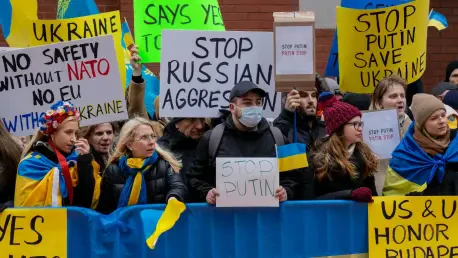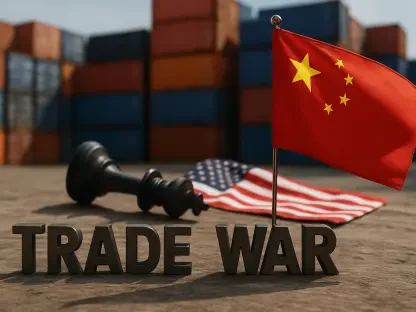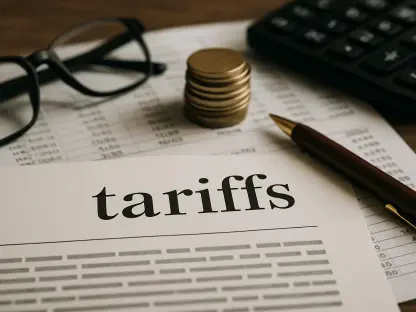The conflict between Russia and Ukraine, persisting into 2025, continues to have profound ramifications across global markets, affecting defense, energy, and commodities. This geopolitical strife is not just a regional disturbance but a global catalyst instigating shifts in market dynamics and economic strategies worldwide. Investors and policymakers alike are exploring strategies to navigate this new landscape, driven by the interconnectedness of military confrontations and market forces. The situation has led to increased investments in defense, a shift towards energy independence, and disruptions across commodity markets, all of which have significant implications for future economic policies and investment strategies.
The Surge in Defense Spending and Its Economic Impact
One of the most immediate impacts of the Russia-Ukraine conflict has been the surge in defense spending among NATO countries. The need to support Ukraine and fortify defenses against potential threats has resulted in increased military budgets, reshaping defense sector investment. This spike in expenditure has led to a substantial demand for advanced military technologies and weaponry, including Patriot missiles, F-16 fighter jets, and GMLRS rockets. The United States plays a pivotal role in replenishing military resources and supporting NATO allies through its backfill strategy. This environment fuels growth in defense manufacturing and aligns with NATO’s strategic aims of modernization and deterrence.
The defense industry’s transformation is evident in shifts toward cutting-edge technologies and modern warfare capabilities. The demand for advanced surveillance systems, drones, and cyber defense mechanisms is growing, reflecting a significant focus on technological innovation within defense strategies. Military technology companies have emerged as major beneficiaries, experiencing increased order backlogs and government contracts. This investment surge aims not only to enhance military capabilities but also to drive broader economic growth through job creation and technological advancements. As the conflict continues to shape defense priorities, companies in this sector are likely to see sustained interest and growth opportunities.
Energy Market Restructuring Amidst Geopolitical Tensions
The conflict has also created ripples across global energy markets, marked by the cessation of Russian gas exports to Europe. This disruption has necessitated a structural overhaul of Europe’s energy supply, emphasizing the need to diversify energy sources and ensure long-term stability. The reliance on Russian gas has been replaced by a greater emphasis on liquefied natural gas (LNG) and renewable energy sources. European countries are intensifying their investments in LNG infrastructure by constructing new terminals and securing contracts with alternative suppliers to fill the void left by Russian energy.
Additionally, the push towards renewable energy is more pronounced as countries strive for greater energy independence. Investment in solar, wind, and other renewable sources is growing, propelled by both environmental concerns and geopolitical considerations. This transition is crucial for insulating economies from geopolitical conflicts and fostering long-term sustainability. It also presents opportunities for green energy companies to capitalize on the reconstruction of the energy framework. This evolving landscape signals a significant shift toward cleaner energy solutions, driven by the dual imperatives of energy security and environmental responsibility.
Commodity Markets and the Geopolitical Ripple Effect
Commodity markets have not been immune to the reverberations of the Russia-Ukraine conflict, with disruptions impacting supply chains and market stability. The heightened demand for raw materials, such as steel and rare earth metals, is fueled by the need for military hardware production, Ukraine’s military rebuilding efforts, and Russia’s sustained military operations. These materials are critical for manufacturing advanced weaponry and technological systems, leading to increased prices and strategic stockpiling.
Agricultural commodities have also been affected, particularly due to disruptions in Ukraine’s grain exports, which serve as a vital global food source. Russian blockades and military activities have impeded Ukraine’s ability to export grain, resulting in fluctuating prices and supply shortages. These disruptions have compelled countries to reassess their agricultural supply chains and explore alternative sources to mitigate risks. The conflict underscores the fragility of global supply chains and highlights the need for diversified sourcing strategies to ensure resilience amidst geopolitical tensions.
Strategic Alignments and Investment Implications
The ongoing conflict has catalyzed a broader realignment of global markets, compelling investors to adopt strategic and diversified approaches to investment. With the geopolitical risk looming large, stakeholders are seeking to align portfolios with the realities of this conflict-driven environment. The defense sector presents opportunities for capitalizing on technological advancements and NATO’s modernization efforts. This trend is marked by an interest in companies pioneering innovative military solutions and catering to increased defense expenditures.
Energy investments are shifting towards a balanced portfolio that incorporates LNG and renewable sources, reflecting the desire for stability and sustainability. The need for energy independence underscores the significance of energy infrastructure development and investment in green technologies. Meanwhile, the commodity market’s volatility incentivizes investment in industrial metals and rare earth elements, prioritizing stability in supply chains. Investors looking to navigate agricultural commodity challenges are exploring diversified sources to offset disruptions. This multifaceted realignment embodies a strategic response to the interconnections of geopolitical and economic shifts.
A Transformative Moment for Global Markets
The ongoing conflict between Russia and Ukraine, extending into 2025, continues to significantly impact global markets, particularly in defense, energy, and commodities. This geopolitical confrontation has evolved beyond a mere regional issue, becoming a key global force that reshapes market dynamics and economic strategies across the world. Investors and decision-makers are actively seeking and implementing strategies to effectively manage this new and challenging landscape. The link between military actions and market responses is more evident than ever, necessitating adjustments in both economic policies and investments. The continuous turmoil has led to a marked increase in defense spending, a concerted push towards energy self-sufficiency, and considerable disruptions across the commodity markets. These developments have far-reaching implications, affecting future economic planning and the strategic direction of investments. The world, therefore, witnesses a transformation deeply influenced by the intertwined nature of these global pressures.









